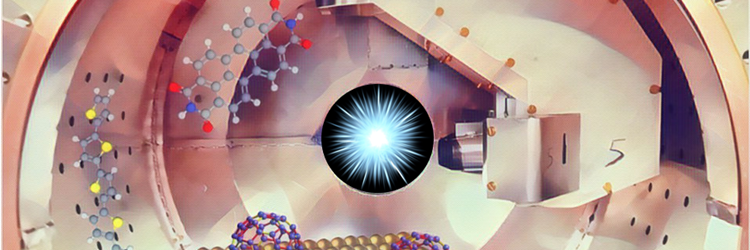

ALOISA is a laboratory for the study of surfaces and interfaces and includes 3 Synchrotron end-stations (alternative use) and one STM (offline).
The beamline provides linearly polarized light in a photon energy range from 130 eV to 1500 eV (flux 1012 ph/sec at 0.2 ‰ bw, max R.P. >104). The main beamline (with optics working at 0.5˚ grazing incidence) serves a multipurpose end-station (ALOISA), which is open to external Users. The branchline was designed with a specific low divergence optical layout to offer large flexibility in hosting different setups for proprietary use of the staff. Currently, two end-stations (ANCHOR and HASPES) are consecutively attached to the branchline for alternative use.
The ALOISA Laboratory is dedicated to the study of surfaces and interfaces and includes three Synchrotron end-stations (alternative use) and one STM (offline).
The beamline provides linearly polarized light in a photon energy range from 130 eV to 1500 eV (flux >1011 ph/sec at 0.2 ‰ bw, max R.P. >104). The main beamline (with optics working at 0.5˚ grazing incidence) serves a multipurpose end-station (ALOISA), which is open to external Users. The branchline was designed with a specific low divergence optical layout to offer large flexibility in hosting different setups for proprietary use of the staff. Currently, two end-stations (ANCHOR and HASPES) are consecutively attached to the branchline for alternative use.
ALOISA. It is equipped with a six-degrees of freedom high precision manipulator coaxial to the photon beam in order to increase the surface sensitivity at grazing incidence. A custom 66mm electron analyzer with 2D detector is hosted in a two-axis rotation frame. The analyzer can be freely oriented above the sample, for any orientation of the surface with respect to the linear polarization.
ANCHOR-SUNDYN. It is equipped with laboratory X-ray (monochromatized Al Kα) and UV (He discharge) sources and with a 150mm analyzer (Phoibos, SPECS) with 2D detector. A femtosecond laser (Amplitude Systèmes), optimized for the optical pump of organic systems (210-2600 nm), is integrated in the ANCHOR endstation in order to perform time resolved X-ray spectroscopies at MHz repetition rate (synchronous to Synchrotron beam).
HASPES. It is a He Atom Scattering apparatus (20-100 meV) equipped with a custom made 150mm analyzer (2D detector) and a high precision manipulator to perform simultaneously XPS and HAS (also during growth) on the same illuminated area. The sample holder (equipped with heaters and thermocouples) is interchangeable with the ALOISA one.
OSMOS. It is a CNR-Elettra joint laboratory for the study of on-surface synthesis and modification of organic molecules. It is currently operative with a variable temperature (120-300 K) UHV STM (Aharus type by SPECS) and a 150 mm LEED (SPECS).
Software:
Instrumentation:
The research activity of the group is dedicated to the study of the morphologic and electronic properties of low dimensional systems of interest for organic electronics and for energy harvesting technologies. In this context, two different topics are tackled:
T1. Study of the charge transfer in the hetero-organic and organic-inorganic interfaces. The systems of interest are interfaces between thin films of organic semiconductor molecules (polyacenes, porphyrines, phthalocyanines) and the interfaces between films of the same class and coinage metals, transition metal oxides or 2D materials. The general aim of electron dynamics characterization is to identify the charge delocalization channels, able to promote charge transport in the systems, and to define the growth protocols to optimize them, in order to improve the efficiency for possible applications in prototypical devices. By studying the static charge transfer, we aim at highlighting the chemical modification of molecules and the system reactivity from the perspective of catalysis and environmental friendly applications.
T2. Synthesis of 2D frameworks on surfaces, using small molecular precursors, aimed at modifying the chemical and morphologic properties of the substrate. The general aim is to build 2D templates with specific chemical properties, able to selectively anchor, via molecular recognition, guest species on surface. The guest host architectures are then investigated in terms of electron dynamics as possible prototypes for the design of electronic devices. Among the systems of interests, we are developing the surface synthesis of covalent organic frameworks based on the condensation of precursors functionalized with boronic acid, hydroxyl and amino terminations.
PRIN 2017, FERMAT, 2019-2022
National:
International: